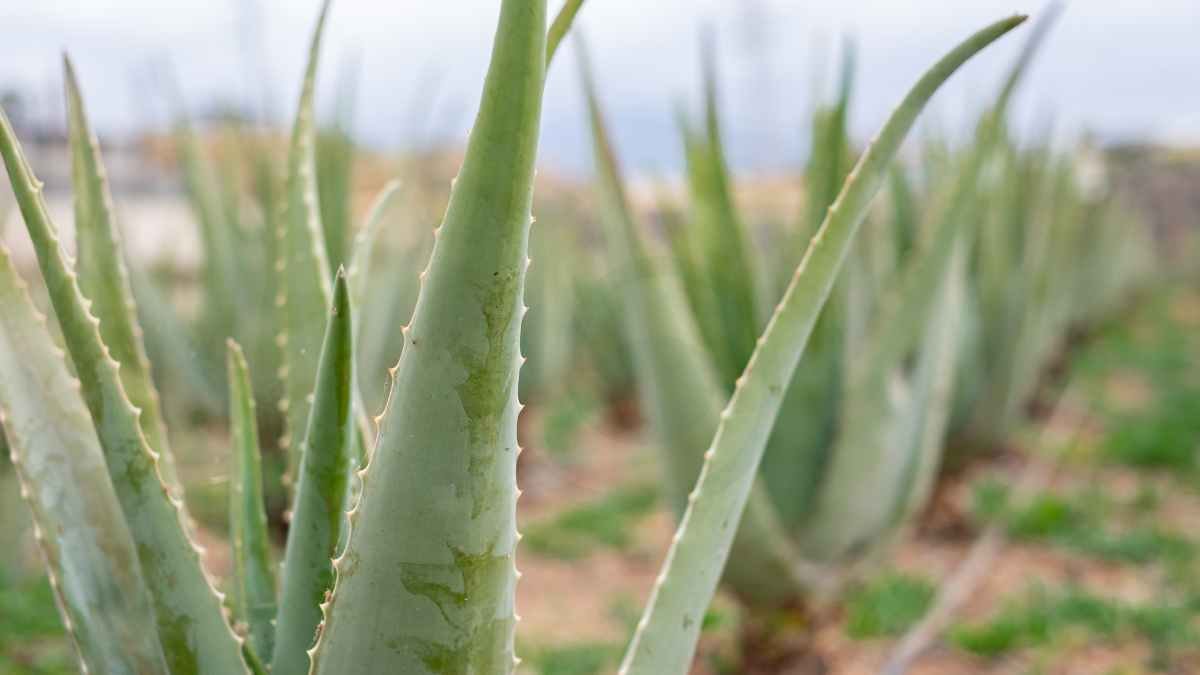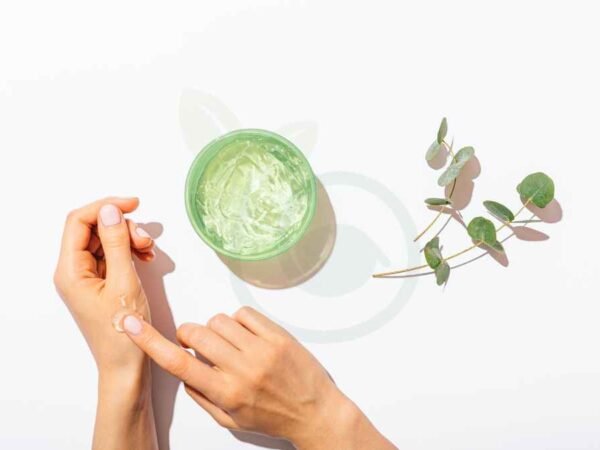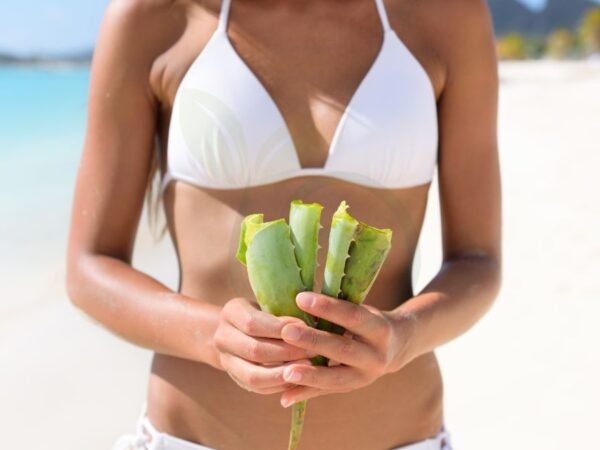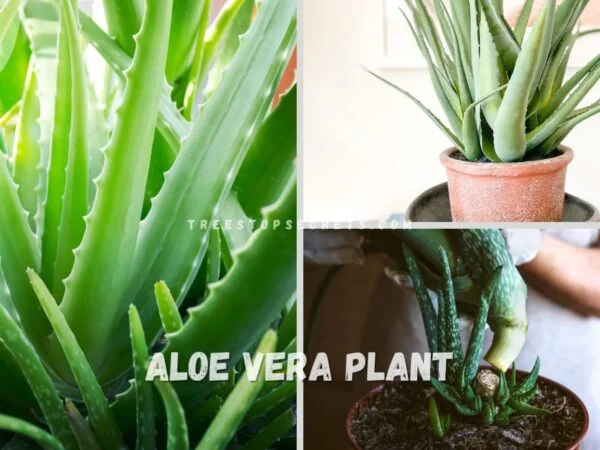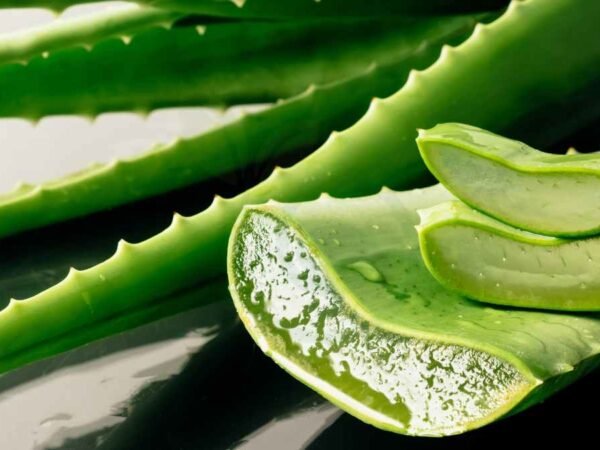Did you know that aloe vera, known for its healing properties, can thrive outdoors in various climates? Many gardeners are surprised to learn that this versatile plant can grow outside with minimal effort. Whether you live in a sunny or mild climate, aloe vera can be a resilient addition to your outdoor garden.
If you're curious about cultivating aloe vera in your outdoor space, this post will provide essential tips and tricks to help you succeed. From proper sunlight exposure to watering techniques, we'll cover everything you need to know about growing aloe vera outside. Discover how easy it can be to incorporate this beneficial plant into your outdoor landscaping.
Key Takeaways
- Optimal Conditions: Ensure your outdoor aloe vera thrives by providing it with plenty of sunlight and well-draining soil.
- Regular Maintenance: Keep your aloe vera healthy by watering it sparingly and protecting it from extreme weather conditions.
- Preventative Care: Address potential challenges like overwatering, pests, or diseases by monitoring your plant regularly.
- Harvesting Tips: Harvest aloe vera leaves carefully and use the gel for various skin and health benefits.
- Maximize Growth: Promote healthy growth by repotting when necessary and propagating new plants from offsets.
- Stay Informed: Educate yourself on common issues like root rot or sunburn to troubleshoot effectively and ensure your aloe vera's well-being.
Understanding Aloe Vera
Plant Basics
Aloe vera, a succulent plant, consists of thick, fleshy leaves that contain a gel-like substance known for its healing properties. The plant also has roots that anchor it into the soil and absorb water. Understanding the different parts of an aloe plant is crucial for its care and maintenance.
The growth cycle of aloe vera involves several stages, starting from the germination of seeds or propagation through offsets. As the plant matures, it develops new leaves from the center rosette, gradually expanding outward. Regular watering and proper sunlight exposure are essential for healthy growth.
Common varieties of aloe plants include Aloe vera barbadensis miller, Aloe arborescens, and Aloe brevifolia. Each variety has unique characteristics such as leaf color, size, and growth patterns. Choosing the right variety depends on factors like climate conditions and intended use, whether for medicinal purposes or ornamental decoration.
Outdoor Benefits
Growing aloe vera outdoors offers numerous advantages such as abundant sunlight exposure, which is crucial for photosynthesis and overall plant health. Outdoor conditions provide ample space for aloe plants to grow freely and thrive in their natural habitat. Outdoor environments promote better air circulation, reducing the risk of fungal diseases.
Outdoor conditions can benefit aloe plant health by stimulating robust growth and enhancing the production of beneficial compounds in the gel-like substance found in its leaves. The exposure to natural elements like rainwater can also help cleanse the leaves and prevent dust accumulation, ensuring optimal photosynthetic activity.
Natural sunlight plays a vital role in promoting healthy growth in aloe vera plants by providing essential nutrients through photosynthesis. Adequate sunlight exposure helps maintain vibrant green leaves rich in nutrients, contributing to the overall well-being of the plant.
Indoor vs Outdoor
Comparing indoor and outdoor growth differences reveals that outdoor aloe plants tend to grow larger due to unrestricted space and abundant sunlight exposure. In contrast, indoor plants may exhibit slower growth rates due to limited light availability and confined spaces.
Transitioning aloe vera from indoors to outdoors can pose challenges such as adjusting to sudden temperature changes or increased sun exposure. Gradual acclimatization is necessary to prevent shock and ensure successful adaptation to outdoor conditions.
Keeping aloe vera plants indoors offers benefits like protection from extreme weather conditions, pests, and diseases prevalent in outdoor environments. Indoor settings provide controlled temperatures and lighting conditions ideal for maintaining consistent growth throughout the year.
Ideal Outdoor Conditions
Climate Needs
Aloe vera thrives in warm climates with temperatures between 60-80°F. Extreme cold can damage aloe plants, so protect them during frost. Adequate sunlight is crucial for aloe vera to bloom, typically requiring at least 6 hours of sunlight daily.
In regions with harsh winters, it's best to grow aloe vera in pots that can be moved indoors during colder months. This flexibility ensures the plant's survival and health throughout the year. Aloe vera may struggle to flower in climates with insufficient sunlight.
Soil Type
A well-draining soil mix is essential for aloe vera, preventing root rot caused by waterlogged conditions. Sandy or cactus mix soils are ideal choices for aloe cultivation due to their excellent drainage properties. These soil types mimic the arid environments where aloe vera naturally grows.
To enhance soil drainage further, consider adding perlite or sand to the potting mix. A pH level between 7 and 8 is optimal for aloe vera growth, ensuring proper nutrient absorption and overall plant health.
Sunlight Exposure
Aloe vera requires abundant sunlight for photosynthesis and growth. Insufficient sunlight can lead to leggy, weak plants with pale leaves. On the other hand, excessive exposure to direct sunlight may cause sunburn on aloe leaves.
Adjusting sunlight exposure involves finding a balance—place your aloe vera where it receives bright but indirect light if direct sun is too intense. Rotating the plant occasionally helps ensure all sides receive adequate light for even growth.
Watering Practices
Overwatering poses a significant risk to aloe vera as it can cause root rot and kill the plant. Water your aloe only when the top few inches of soil are dry; typically, this means watering every 2-3 weeks depending on environmental conditions.
Signs of overwatering include mushy leaves and blackened stems, while underwatered aloes show shriveled leaves and brown tips. When watering, ensure excess water drains out of the pot to prevent waterlogging that damages roots.
Planting Aloe Vera Outside
Choosing the Right Spot
When planting aloe vera outside, it's crucial to select a spot with ample sunlight and good drainage. Ensure the area receives at least 6 hours of sunlight daily, promoting healthy growth. Adequate air circulation is vital for preventing moisture-related issues like rot.
Consider nearby plants that may impact your aloe vera. Avoid placing them near succulents that require more water, as this can lead to overwatering your aloe. Opt for locations away from dense foliage to prevent shading and promote proper airflow.
Soil Preparation
To prepare the soil for aloe vera, ensure it is well-draining by adding sand or perlite to improve drainage. Mix in some organic matter like compost to enhance soil fertility and provide essential nutrients for the plant's growth.
Adding nutrients like phosphorus and potassium can boost aloe vera's resilience and overall health. These nutrients aid in root development, ensuring strong and robust roots that support the plant's growth and water uptake.
Transplanting Tips
When transplanting aloe vera, choose a pot that allows for sufficient root space and good drainage holes. The best time to transplant aloe vera pups is during the spring when they are actively growing, promoting quicker root establishment.
To minimize transplant shock, gently remove the pup from its original container, being careful not to damage the roots. Allow the plant to dry for a day before replanting it in well-draining soil. Water lightly after transplanting and gradually increase watering as the plant adjusts.
Outdoor Aloe Vera Care
Regular Maintenance
Aloe vera plants require regular maintenance to thrive. Pruning is crucial for removing dead leaves and promoting new growth. Monitoring plant health involves checking for signs of overwatering or under-watering.
Benefits of regular pruning include stimulating growth and preventing disease. Trimming off dead or damaged leaves helps the plant focus its energy on healthy foliage. This practice also enhances air circulation around the plant, reducing the risk of fungal infections.
To maintain aloe vera plant health, ensure they receive adequate sunlight, water sparingly, and use well-draining soil. Avoid overwatering, as it can lead to root rot. Inspect the leaves regularly for any discoloration or pests.
Managing Pests
Common pests that can affect aloe vera plants include mealybugs and spider mites. Mealybugs appear as white cottony masses on the leaves, while spider mites cause stippling and webbing.
Natural pest control methods for aloe plants involve using neem oil or a mixture of water and mild soap to deter pests. Introducing beneficial insects like ladybugs can help keep pest populations in check.
Signs of pest infestation in aloe vera include wilting leaves, yellowing, or distorted growth patterns. Prompt action is essential to prevent pests from causing significant damage to the plant.
Weather Protection
Protecting aloe vera plants from adverse weather conditions is vital for their survival. Extreme temperatures can damage the leaves and roots of the plant, affecting overall growth.
Extreme heat can cause sunburn on aloe vera leaves, leading to browning or reddening. During cold spells, frost protection is necessary to prevent freezing damage. Consider moving potted aloe plants indoors during harsh weather conditions.
To shield aloe plants from harsh weather elements like strong winds or heavy rain, place them in sheltered locations or use protective coverings such as row covers or cloches. Providing adequate drainage is also essential to prevent waterlogging during rainy periods.
Challenges of Outdoor Growth
Extreme Weather
Aloe vera plants are resilient but can struggle in extreme weather. High temperatures can cause dehydration and sunburn, while frost can lead to freezing damage. To protect aloe vera during heatwaves, provide ample shade and water frequently.
Prolonged exposure to cold temperatures can harm aloe vera plants by causing frostbite, leading to tissue damage. When faced with frost, move potted aloe vera indoors or cover them with frost cloths. Protect outdoor aloe vera during winter by planting them in well-draining soil.
Pests and Diseases
Common diseases affecting aloe vera include root rot, caused by overwatering, and leaf rot, triggered by fungal infections. To prevent diseases, avoid overwatering and ensure proper drainage. Treat root rot by cutting off the infected parts and repotting in fresh soil.
Aloe vera plants are susceptible to pests like mealybugs and spider mites, which feed on plant sap and weaken the plant. Use insecticidal soap or neem oil to control pest infestations. Regularly inspect your aloe vera for signs of pests or diseases.
Space Requirements
To thrive, aloe vera plants need sufficient space for their roots to spread out. Overcrowding can hinder growth and lead to competition for nutrients. Optimal spacing between aloe vera plants is around 12-24 inches to allow for proper air circulation.
Overcrowded aloe vera plants are more prone to diseases due to increased humidity levels and reduced airflow. If growing multiple aloe vera plants, ensure they are spaced adequately apart. Consider repotting overcrowded plants into larger containers or separate pots.
Maximizing Growth and Health
Fertilization Tips
Fertilization plays a crucial role in promoting the growth and health of aloe vera plants. Providing nutrients through fertilizers helps aloe vera thrive and produce vibrant, succulent leaves. The best fertilizers for aloe vera contain a balanced mix of nitrogen, phosphorus, and potassium.
To ensure optimal growth, create a fertilization schedule for your aloe plants. Typically, fertilize your aloe vera every two to four weeks during the growing season in spring and summer. During fall and winter, reduce fertilization to once every two months to support healthy development.
Pruning Practices
Pruning is essential for maintaining the vitality of aloe vera plants. By removing dead or damaged leaves, you encourage new growth and prevent disease. The best time to prune aloe vera leaves is when they are dry and brittle.
Proper pruning techniques involve using sharp, clean scissors to cut the leaves at an angle close to the stem. This method stimulates new leaf growth and ensures that your aloe plant remains healthy and visually appealing.
Propagation Methods
Propagation allows you to expand your collection of aloe vera plants by creating new ones from existing ones. There are several methods for propagating aloe vera, including division, offsets (pups), and leaf cuttings. Each method has its benefits depending on your preferences.
To successfully propagate aloe vera pups, carefully remove them from the parent plant with clean shears. Allow the pups to dry for one to two days before planting them in well-draining soil. With proper care and attention, these pups will grow into robust aloe vera plants.
Troubleshooting Common Issues
Yellowing Leaves
Yellowing leaves in aloe vera plants can signal various underlying issues. Overwatering is a common cause, leading to root rot and nutrient deficiencies. Ensure proper drainage to prevent waterlogging.
To prevent yellowing leaves, adjust the watering frequency and allow the soil to dry out between waterings. Provide adequate sunlight for healthy leaf coloration and growth.
Leaf color changes in aloe vera are significant indicators of plant health. Green leaves signify optimal conditions, while yellow or brown leaves may indicate stress or disease.
Slow Growth
Slow growth in aloe vera plants can result from inadequate sunlight exposure or poor soil quality. Ensure your plant receives at least 6-8 hours of sunlight daily for optimal growth.
To promote faster growth, repot your aloe plant in well-draining soil, such as cactus mix. Fertilize sparingly during the growing season to provide essential nutrients.
Common factors contributing to slow aloe vera growth include low light levels, incorrect watering practices, and lack of nutrients in the soil.
Root Rot
Signs of root rot in aloe vera include wilting leaves, mushy stems, and a foul odor emanating from the roots. Inspect the roots for dark, soft areas as an early indication of rot.
Root rot is often caused by overwatering, leading to oxygen deprivation and fungal infections. To prevent it, ensure proper drainage and avoid water stagnation around the roots.
To treat root rot in aloe vera plants, trim off affected roots and repot the plant in fresh soil. Adjust watering practices to prevent future occurrences of this common issue.
Harvesting Aloe Vera
When to Harvest
Aloe vera leaves should be harvested when they are mature, typically after 3-4 years of growth. The optimal time for harvesting is in the morning when the aloe plant is full of nutrients. Look for signs such as leaves that are thick and plump, indicating readiness for harvest. Ensure that the leaves are at least 8 inches long before cutting them.
Harvesting Techniques
To properly harvest aloe vera leaves, start by selecting mature leaves from the outer rows of the plant. Use a sharp knife to cut the leaf close to the base without damaging the plant. Cut at an angle to allow sap to drain easily. Avoid cutting too many leaves at once to prevent stressing the plant. After harvesting, you can store the leaves in a cool, dry place for later use.
When extracting aloe vera gel, begin by washing the harvested leaves thoroughly to remove any dirt or debris. Then, peel off the green outer layer of the leaf to reveal the clear gel inside. Scoop out the gel using a spoon or knife and store it in an airtight container for future use. Another method involves blending the peeled gel with water to create a soothing skin treatment or adding it to smoothies for its health benefits.
Closing Thoughts
In conclusion, growing aloe vera outside can be a rewarding experience if you provide the right conditions and care. Understanding the plant, planting it correctly, and addressing potential challenges are crucial steps in ensuring its optimal growth and health. By maximizing your efforts and troubleshooting any issues that may arise, you can enjoy a plentiful harvest of aloe vera with numerous benefits for your skin and overall well-being.
Now that you have all the information you need to grow aloe vera successfully outdoors, roll up your sleeves and get started on creating your thriving aloe garden. Remember to monitor your plants regularly, adjust care as needed, and enjoy the natural beauty and practical advantages that aloe vera brings to your outdoor space.
Frequently Asked Questions
Can aloe vera be grown outside in all climates?
Aloe vera thrives best in warm climates and can be grown outdoors in regions with temperatures above 50°F (10°C). In colder climates, it's advisable to plant aloe vera in pots so they can be brought indoors during winter.
How much sunlight does outdoor aloe vera need?
Outdoor aloe vera plants require plenty of sunlight, ideally 6-8 hours of direct sunlight per day. Place them in a sunny spot in your garden or on a patio where they can receive adequate light for optimal growth.
Is it necessary to water outdoor aloe vera frequently?
Aloe vera is a drought-resistant plant and should not be overwatered. Water your outdoor aloe vera sparingly, allowing the soil to dry out completely between watering sessions. Overwatering can lead to root rot and other issues.
What are the common challenges faced when growing aloe vera outdoors?
Common challenges of outdoor aloe vera growth include overwatering, inadequate sunlight, pest infestations, and poor drainage. Monitoring these factors and providing proper care can help prevent these challenges and ensure healthy plant growth.
When is the right time to harvest aloe vera leaves from outdoor plants?
You can harvest aloe vera leaves from outdoor plants once they reach about 8-10 inches in length. Use clean scissors to cut the outer leaves close to the base of the plant. Allow the harvested leaves to rest for a few minutes before use or storage.
Image Source: Paid image from CANVA

